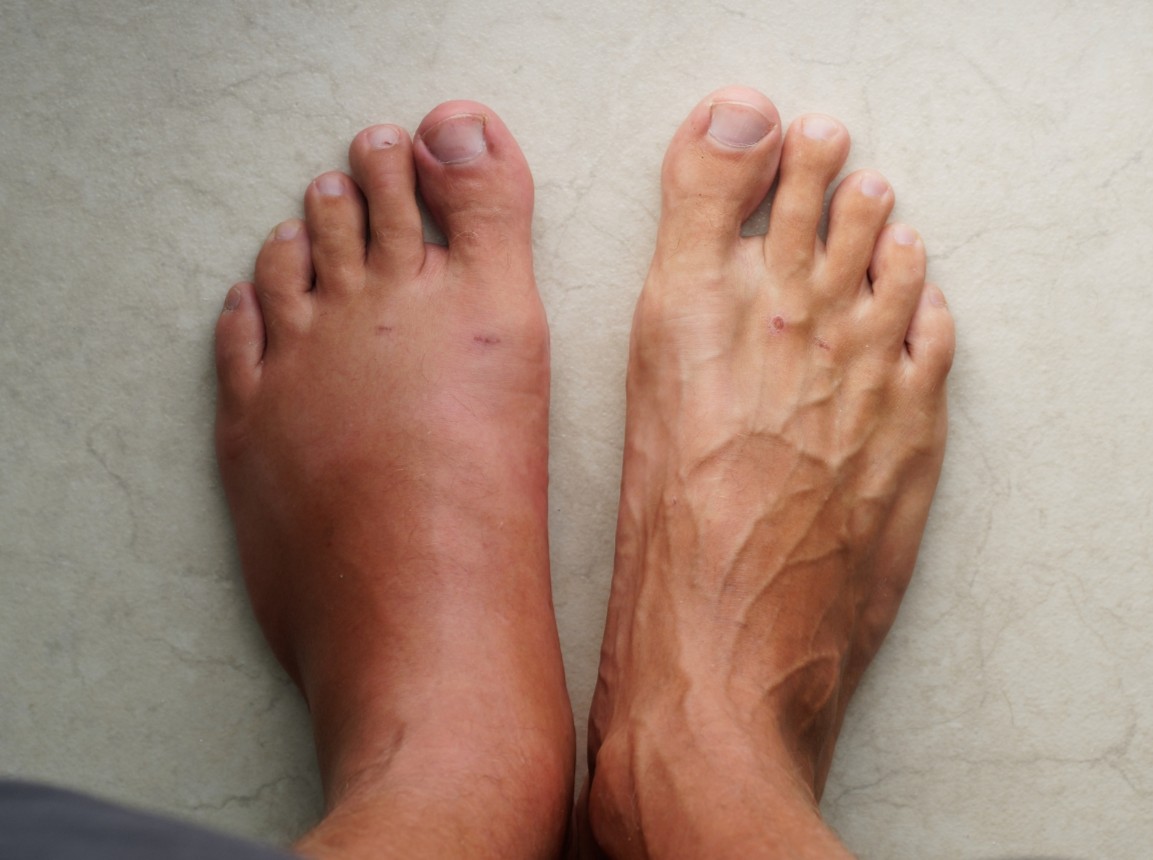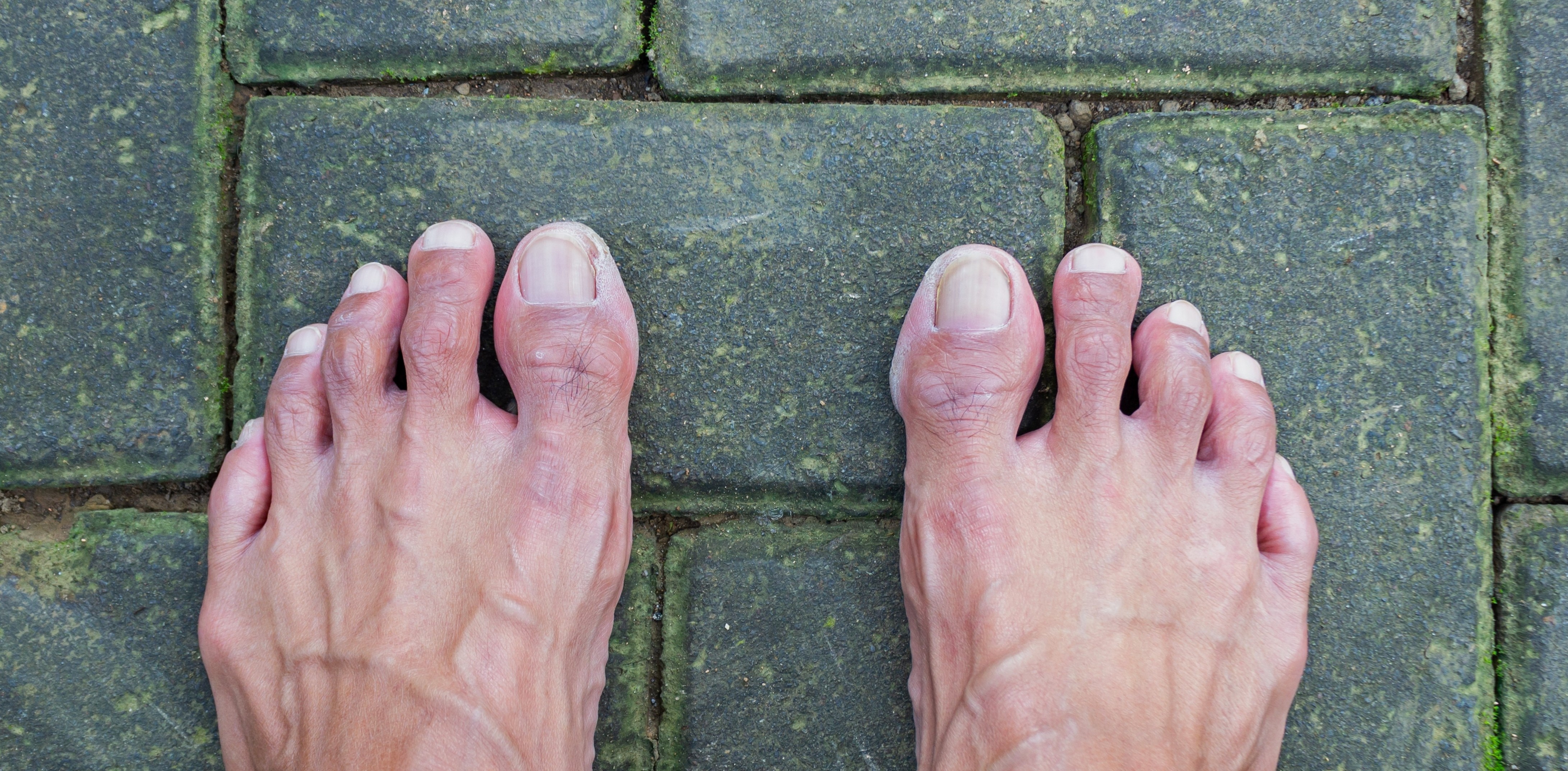Hammer toes describe the slight toe deformity where the toe begins to point down in the middle of the toe. Unlike claw toes, the toe remains straight through the ball of the foot and then begins to bend downwards, resembling the shape of a hammer. Claw toes are differentiated by the toe first bending upwards from the ball of the foot, before curling around to point downwards.

Each of the four small toes has two joints between the ball of the foot and the tip of the toe. The first is called your distal interphalangeal joint which is closest to the end of the toe, and the second is your proximal interphalangeal joint, which is closer to the ball of the foot. The names of these joints come from their position between the three toe bones, called the phalanges. Hence, interphalangeal. Hammer toes describe the bending (flexion) of the proximal interphalangeal joint.
Hammer toes are most likely to affect the second or third toes, though can affect any of the toes. Common causes or contributing factors can include:

 The biggest symptom is the hammer-like position of the toe. Many hammer toes can remain asymptomatic, particularly in men who don’t
wear tight shoes or place any abnormal pressure on their toes. However, hammer toes can also become uncomfortable and, for some,
painful. Pain usually results from corns, blisters, or calluses that
form at the end of the hammer toe where it comes in contact with the ground. This can make it painful to walk and will require the blisters,
calluses or corns to be managed to alleviate pain. The toes may also become red and swollen from rubbing against the shoes. In the early
stages, hammer toes may still be flexible and able to be straightened out with the fingers. However, over time, the toe will become fixed in
this position. Depending on your symptoms, pain levels, and your goals for your toes, your Podiatrist will discuss the best options for
you with regard to managing your hammer toes.
The biggest symptom is the hammer-like position of the toe. Many hammer toes can remain asymptomatic, particularly in men who don’t
wear tight shoes or place any abnormal pressure on their toes. However, hammer toes can also become uncomfortable and, for some,
painful. Pain usually results from corns, blisters, or calluses that
form at the end of the hammer toe where it comes in contact with the ground. This can make it painful to walk and will require the blisters,
calluses or corns to be managed to alleviate pain. The toes may also become red and swollen from rubbing against the shoes. In the early
stages, hammer toes may still be flexible and able to be straightened out with the fingers. However, over time, the toe will become fixed in
this position. Depending on your symptoms, pain levels, and your goals for your toes, your Podiatrist will discuss the best options for
you with regard to managing your hammer toes.
The best treatment is prevention. Because footwear is the leading cause of hammer toes, avoiding pointed footwear and always ensuring that there is sufficient room at the toes is a great place to start. Minimising the wearing of high heels will also help, as will ensuring the size of shoes is always measured in accordance with your longest toe, which can be your second toe instead of the big toe – a common mistake. Your Podiatrist will help identify the exact cause and may provide advice on removing corns or reducing the callus, if present. Custom orthotics can help control the imbalance between the muscles and the tendons. To realign the toes, where appropriate, splints may be used. Surgery is only suggested for hammer toes when conservative options are exhausted.

We’ve all had those days — you come home after hours on your feet, kick off your shoes, and notice your ankles look puffier than usual.
Swelling in the feet, ankles, or legs (known medically as edema) isn’t always a reason to panic. It can be as simple as a
salty lunch or a long flight.
But what if it’s happening more often — or seems to be getting worse? Swelling can sometimes be a sign of something more serious. Here’s
what could be going on and when to check in with your doctor.
.jpg)
Every year on October 8th, the world celebrates International Podiatry Day - a day dedicated to
raising awareness about foot health and the vital role that podiatrists play in our overall well-being.

There’s been a lot of buzz about going barefoot. Some say it helps strengthen feet and improves performance, while others warn it can do more harm than good. The truth? It depends on the person, the surface, and how it’s done.
Keeping your family on their feet and helping them to walk, run, play and exceed their goals is why we love getting up in the morning.
Ground Floor, One Health Building
122 Remuera Rd, Remuera
Auckland 1050, New Zealand
| MON - FRI | 7:30am – 6:30pm |
| SAT | 8:30am – 4:30pm |
| SUN | Some availability |
Make an Appointment
Online Schedule
Our virtual receptionist is available 24/7 to help with general questions, booking requests, and clinic information, even when our team is busy, or it's after hours.
Whether you're calling us or using our website, you'll get fast assistance any time of day. And if your query needs a personal touch, a member of our team will follow up as soon as possible.
If you’d like to see a podiatrist who speaks your preferred language, just give us a call and we’ll help you book.